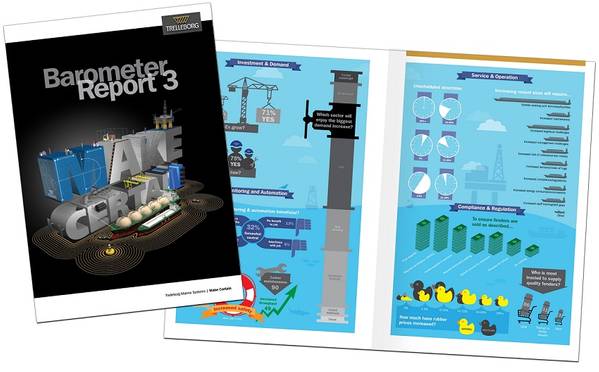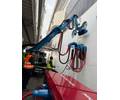
A recent study found that 84% of port owners, operators and contractors said they would expect increased safety to be the primary benefit in specifying an automated system to monitor factors such as mooring line tension, approach speed and environmental conditions, according to a new independent market report by the marine systems business of Trelleborg.
However, the majority (60%) of those surveyed only uses human or manual guidance at their facilities both during initial docking and mooring, and to monitor environmental conditions as the vessel continues to berth.
Richard Hepworth, President of the marine systems business of Trelleborg, said, “Greater use of automation offers a significant opportunity to upgrade existing port facilities. Automated solutions that monitor mooring line tension, environmental conditions and speed of approach offer a chance to improve safety and boost operational efficiencies – and it seems the industry recognizes these benefits.
“However, with over half of those we surveyed still only using human or manual guidance in docking and mooring - rather than enjoying the benefits of Docking Aid Systems (DAS) or Global Positioning Systems (GPS), it appears many may be putting their facilities at risk of becoming antiquated. This begs the question: why are so many jeopardizing their operations by ‘making do’ rather than upgrading to maximize efficiencies and improve safety?”
Overall, the specification of monitoring systems was perceived to be beneficial. Along with improved safety, respondents cited lower maintenance as a key advantage. Indeed, half of the industry stakeholders surveyed believing an increase in monitoring and automation to be beneficial to their job role.
Whilst positive about the benefits offered, less than 40% made use of laser Docking Aid Systems (DAS) or Global Positioning Systems (GPS) suggesting that, although the industry understands the benefits, stakeholders are not proactive in implementation.
Hepworth concluded, “The market is lagging behind the technology available. Whilst automated solutions are seen as beneficial, it’s clear there’s still work to be done to bring the technology fully into the port environment. In this increasingly pressurized world, surely these additional tools should offer welcome assistance?”
Trelleborg’s Barometer Report, which details a wide range of findings from the industry survey, is available now as a free download from http://www.trelleborg.com/en/Marine-Systems/Resources/Downloads-2/Barometer-Report-3-NEW/
www.trelleborg.com



